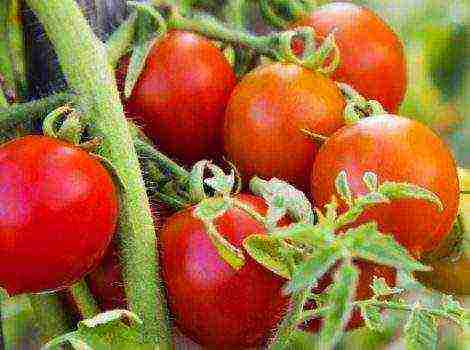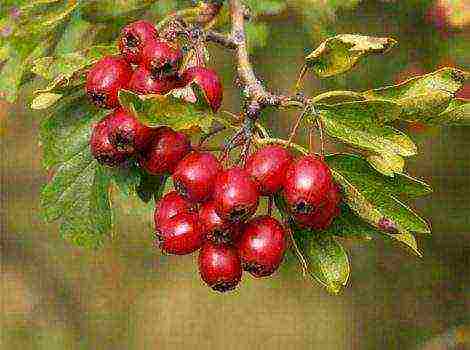Content
- 1 "Who is" dogwood?
- 2 Is the berry sweet?
- 3 Where can you find dogwood?
- 4 Features of cultural cultivation
- 5 Dogwood in the gardens of Belarus
- 6 Dogwood in the suburbs
- 7 How to plant a seedling correctly?
- 8 Nuances of seed growing dogwood
- 9 Easy bush care
- 10 10 little-known facts about dogwood
- 11 How to choose a seedling
- 12 Planting dogwood
- 13 When to plant
- 14 Dogwood care
- 15 Top dressing
- 16 How to prune dogwood
- 17 Pests and diseases
- 18 Dogwood varieties
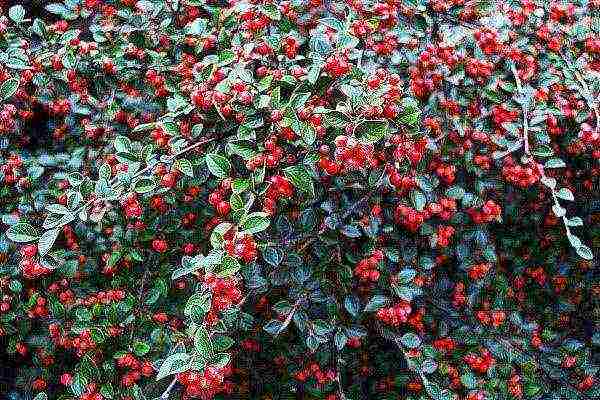 Dogwood is one of the long-livers that have been undeservedly ignored by gardeners, capable of growing in one place for more than 200 years. Having begun to bear fruit at a relatively late (compared to other crops) age of about 10 years, it gives its tasty and healthy berries for more than 2/3 of its life period, and only the last few decades the bush has been resting. How to grow such a culture on your site and what needs to be considered when planting and caring for it, we will talk about this today.
Dogwood is one of the long-livers that have been undeservedly ignored by gardeners, capable of growing in one place for more than 200 years. Having begun to bear fruit at a relatively late (compared to other crops) age of about 10 years, it gives its tasty and healthy berries for more than 2/3 of its life period, and only the last few decades the bush has been resting. How to grow such a culture on your site and what needs to be considered when planting and caring for it, we will talk about this today.
"Who is" dogwood?
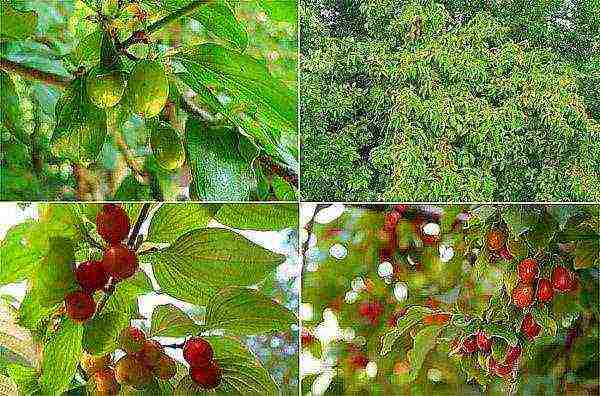 Dogwood is a fairly tall shrub, the height of which depends on the climate in which it grows. On average, the "growth" of bushes is about 3 m, although there are often taller 8-meter comrades, more like trees.
Dogwood is a fairly tall shrub, the height of which depends on the climate in which it grows. On average, the "growth" of bushes is about 3 m, although there are often taller 8-meter comrades, more like trees.
Regardless of the species, woody or bushy variety, in the "childhood" age all plants actively grow young shoots, painted in yellow-green color, but, "growing up", the branches are covered with gray wrinkled bark, which turns red over time. The crown of the bush is round or in the form of a pyramid, and the leaves have an elongated shape and a sharp tip. The leaf plate is painted on top in a bright green light with a slight gloss, while on the bottom it is lighter and more dull.
The leaf plate is painted on top in a bright green light with a slight gloss, while on the bottom it is lighter and more dull.
Blooming dogwood is no less decorative: yellow lush umbrellas of inflorescences bloom in early spring, in March, and before the leaves peep out of the buds on the branches.
Is the berry sweet?
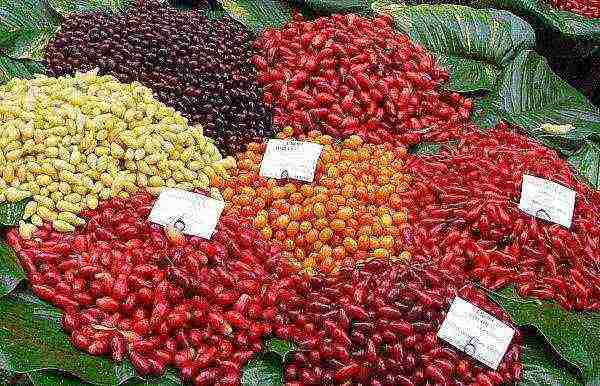 At the end of summer - at the beginning of autumn, elongated berries begin to ripen on the bushes: they are small, up to a maximum of 4 cm in length and up to 8 g each in weight, but with very tasty and juicy pulp. The taste is dominated by sourness and a tart note is clearly felt. It has been noticed that the berries left on the bushes during the autumn frosts become sweeter.
At the end of summer - at the beginning of autumn, elongated berries begin to ripen on the bushes: they are small, up to a maximum of 4 cm in length and up to 8 g each in weight, but with very tasty and juicy pulp. The taste is dominated by sourness and a tart note is clearly felt. It has been noticed that the berries left on the bushes during the autumn frosts become sweeter.
The color of the berries depends on the variety, but they are mostly bright red, although breeders have bred yellow, white and different shades of red dogwood. All of them are very tasty and extremely healthy due to the rich composition of trace elements. Excellent compotes and preserves, wines and syrups are prepared from dogwood berries, as well as dried, dried and frozen. In addition, dogwood has a number of medicinal properties, which makes it an indispensable aid in the treatment of many diseases.
To prepare berries for future use, it is better to pick them when the dogwood is just beginning to ripen. Folded in boxes or wicker baskets, green berries ripen right in them.
Where can you find dogwood?
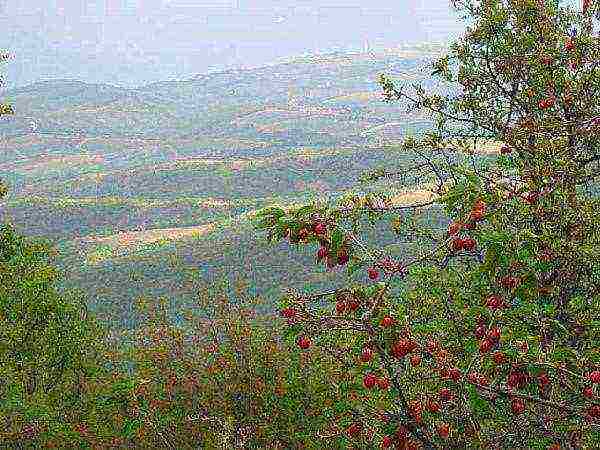 The perennial prefers thermophilic climatic conditions and among the places where dogwood grows, it is worth noting, first of all, the mountain forests of the Transcaucasia, the Caucasus and Transcarpathia. Also, a lot of wild-growing dogwood is observed on the territory of the Crimea. In the indicated area, the culture has the most optimal conditions in which it bears fruit successfully.
The perennial prefers thermophilic climatic conditions and among the places where dogwood grows, it is worth noting, first of all, the mountain forests of the Transcaucasia, the Caucasus and Transcarpathia. Also, a lot of wild-growing dogwood is observed on the territory of the Crimea. In the indicated area, the culture has the most optimal conditions in which it bears fruit successfully.
The persistent character of a perennial does not prevent it from growing even among rocks, however, this leaves an imprint on the appearance of the plant. For example, in Armenia, a dogwood in the form of a short-stemmed low tree looks out directly from rock crevices.
On the territory of Russia, perennial is also used everywhere as an ornamental plant, since it has a good overall frost resistance.However, the characteristic nuances of the growing season also require a certain approach to cultivation, especially if it is planned not only to get a beautiful hedge, but also to wait for ripe red berries.
Dogwood blooms very early, and the harvest ripens for a long time (more than 200 days).
In this regard, in central Russia, it is better to plant early maturing varieties of dogwood, otherwise the ovary may suffer from recurrent frosts or the berries will not have time to ripen before the onset of autumn frosts.
Features of cultural cultivation
 Planting and caring for dogwood will not cause much trouble if you responsibly choose the variety and place for the shrub. Only dogwood varieties that are capable of growing and bearing fruit in the local climate should be planted unambiguously. For example, in the middle latitudes, late-ripening dogwood species will not have time to ripen before the arrival of winter, which means that early varieties should be preferred.
Planting and caring for dogwood will not cause much trouble if you responsibly choose the variety and place for the shrub. Only dogwood varieties that are capable of growing and bearing fruit in the local climate should be planted unambiguously. For example, in the middle latitudes, late-ripening dogwood species will not have time to ripen before the arrival of winter, which means that early varieties should be preferred.
When choosing a place for planting a perennial, it is better to stay in the southwestern section, which meets the following requirements (there the dogwood will grow well and bear fruit abundantly):
- groundwater is no closer than one and a half meters;
- the soil is fertile and not acidic.
It is necessary to plant dogwood at a distance of at least 5 meters from fences and trees, so that the crown can receive full-fledged lighting, and the bush has room to grow.
Dogwood in the gardens of Belarus
 Separately, it is worth mentioning the cultivation of thermophilic dogwood in Belarus - the local cold climate requires a special approach, in particular, it is better to start planting seedlings in spring, so that they have time to get stronger by winter. Those plants that are formed in the form of a shrub survive the winter best, but even they need to be covered if the average temperature in winter drops below 30 degrees below zero. To do this, the shoots are bent to the ground and the bush is covered with spruce branches.
Separately, it is worth mentioning the cultivation of thermophilic dogwood in Belarus - the local cold climate requires a special approach, in particular, it is better to start planting seedlings in spring, so that they have time to get stronger by winter. Those plants that are formed in the form of a shrub survive the winter best, but even they need to be covered if the average temperature in winter drops below 30 degrees below zero. To do this, the shoots are bent to the ground and the bush is covered with spruce branches.
As a garden and berry crop, the main purpose of which is fruiting, such early varieties of dogwood with ripening at the end of summer have proven themselves well on the territory of Belarus:
- Coral Stamp. Unusual dark pink berries with an orange tint ripen in the second half of August.
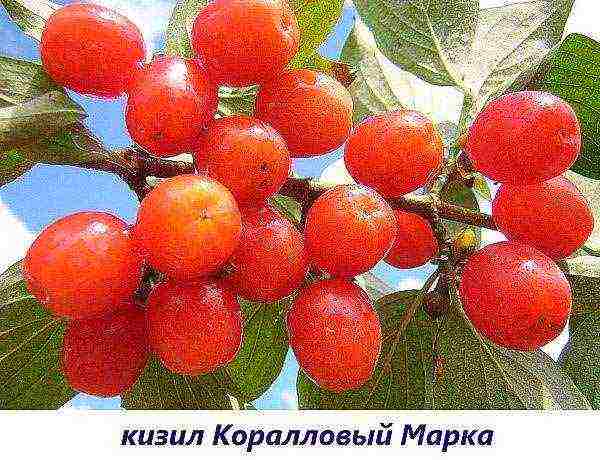
- Elegant. The first harvest is already at the end of July. The cherry-colored berries are in the shape of a bottle with a narrow neck and do not crumble until frost. Differs in low growth (no more than 2 m in height).
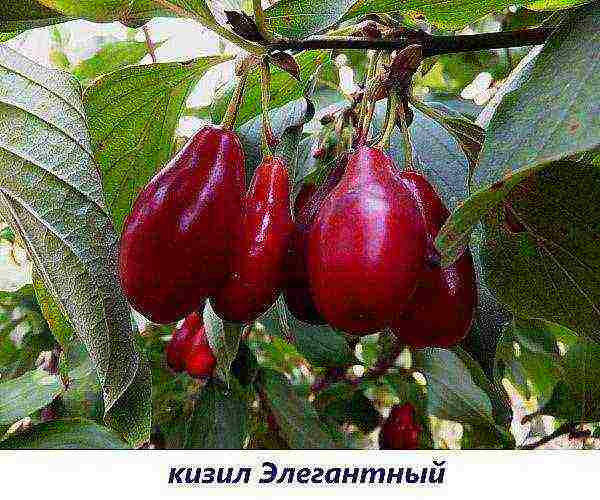
- Mid-season variety Vladimirsky. One of the largest-fruited species of dogwood, the weight of one almost black berry is about 10 g, the shape is rounded, slightly flattened. Ripening begins in the third decade of August.
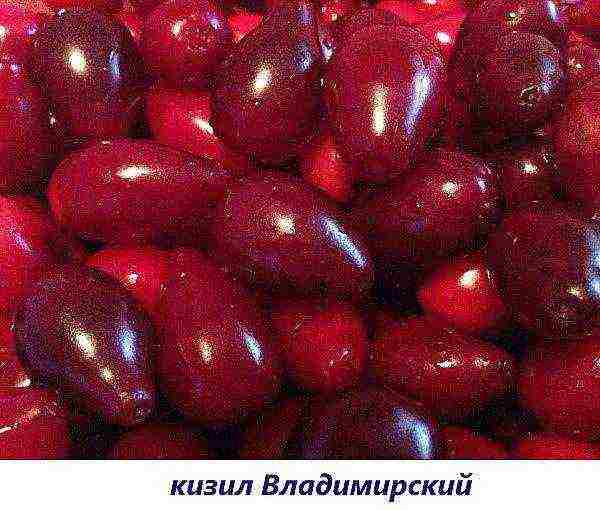
Dogwood in the suburbs
 Spring planting of seedlings is also recommended when growing dogwood in the Moscow region, where the winters are also cold. But local gardeners can boast of an abundance of snowfalls, which simplify measures to protect shrubs from frost: if the average winter temperature is up to 30 degrees below zero, it is enough to “barricade” the bushes with a snowdrift.
Spring planting of seedlings is also recommended when growing dogwood in the Moscow region, where the winters are also cold. But local gardeners can boast of an abundance of snowfalls, which simplify measures to protect shrubs from frost: if the average winter temperature is up to 30 degrees below zero, it is enough to “barricade” the bushes with a snowdrift.
Of the frost-resistant varieties that grow well and bear fruit in the conditions of the Moscow region, it is worth noting:
- Nikolka. The dark red sweet berries ripen in early August.

- Grenadier. High-yielding variety (up to 45 kg of berries from one bush). Red elongated berries ripen in the first decade of August, taste sweet and sour.
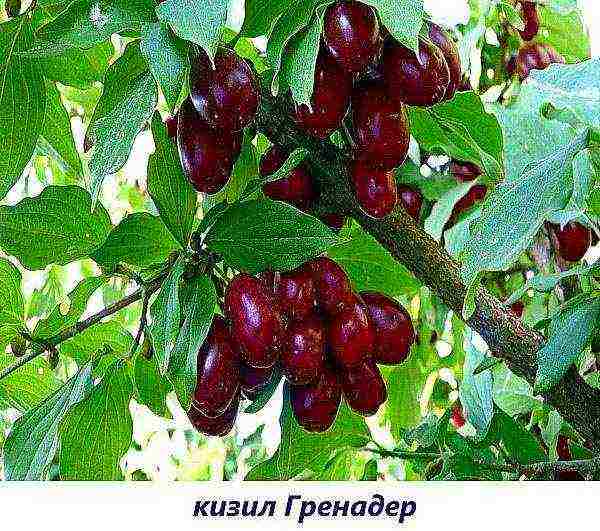
- Elena. At the end of August, you can pick dark red, slightly oval, sweet-fleshed berries.
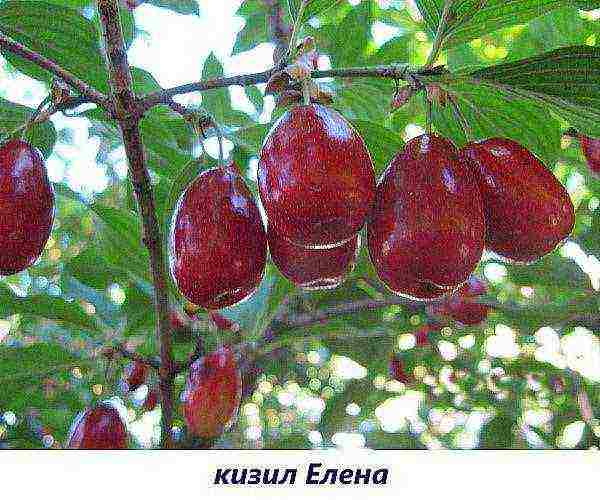
How to plant a seedling correctly?
 The most convenient way to grow dogwood is with seedlings, which can be purchased at a local nursery, where there is always a large selection of zoned varieties. What does a dogwood seedling look like? It should be:
The most convenient way to grow dogwood is with seedlings, which can be purchased at a local nursery, where there is always a large selection of zoned varieties. What does a dogwood seedling look like? It should be:
- not older and not younger than 2 years old:
- with a well-developed root system;
- up to 1.5 m high;
- with a stem diameter up to 2 cm;
- with at least 5 mature skeletal branches.
The optimal planting time is autumn. For a seedling, dig a planting hole with dimensions of 60 * 60 cm.Mix the top layer of soil with mineral fertilizers and humus and fill up the bush, deepening the root collar no more than 3 cm above the soil level (after the earth settles, the collar should be equal to it). After watering, mulch the trunk circle and it is advisable to shorten the shoots near the bush, leaving 2/3 of their length.
Planting dogwood must be carried out in pairs, at a distance of 3 to 5 m from each other. This is necessary for pollination, because in early spring, when the perennial blooms, it is still cold outside and the bees have not yet begun their work.
Nuances of seed growing dogwood
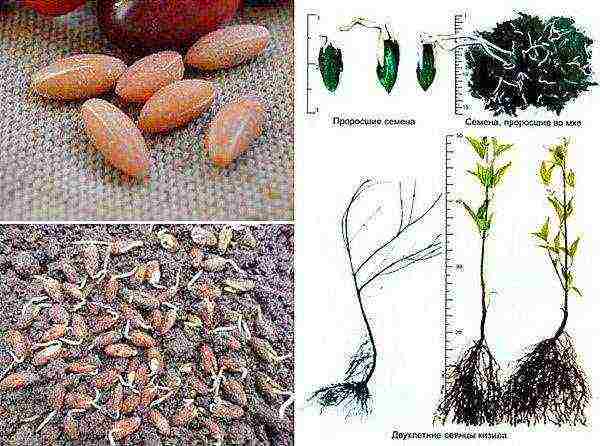 For those who like to experiment, you can try to grow a useful perennial from drupes. This procedure is quite lengthy, since they sprout for a very long time, but it will come in handy if it is problematic to purchase a ready-made seedling.
For those who like to experiment, you can try to grow a useful perennial from drupes. This procedure is quite lengthy, since they sprout for a very long time, but it will come in handy if it is problematic to purchase a ready-made seedling.
What should you pay attention to and how to grow a dogwood from a stone? First of all, this is the stratification of seeds: after harvesting, remove the pulp from ripe berries, rinse them and place them in a container with sawdust. Over the next year, the drupes should be there, while it is important to constantly maintain a high level of humidity by regularly moistening the sawdust.
Stratified drupes emerge in the year of planting, while without this procedure, seedlings should be expected for at least two years.
Prepared dogwood seeds must be planted in nutrient soil and looked after as usual: water, fertilize. It is worth taking into account the rate of how the dogwood grows from the seeds: in two years after germination, the seedling will stretch only 15 cm.But the harvest from such a plant can be obtained no earlier than in 7 years. For this reason, gardeners are looking for every opportunity to buy seedlings. Buying full-fledged dogwood bushes allows you to save yourself the hassle of growing and bring fruiting closer.
Easy bush care
 Growing and caring for dogwood is generally not troublesome. In the first year, young bushes need frequent watering, but with age, the perennial is already able to stay for a longer time without additional moisture. After each watering, it is necessary to loosen the soil to avoid rapid evaporation of moisture. You will also need to pull out the weeds so that they do not drown the plant. In general, everything is like other horticultural crops.
Growing and caring for dogwood is generally not troublesome. In the first year, young bushes need frequent watering, but with age, the perennial is already able to stay for a longer time without additional moisture. After each watering, it is necessary to loosen the soil to avoid rapid evaporation of moisture. You will also need to pull out the weeds so that they do not drown the plant. In general, everything is like other horticultural crops.
Separately, it is worth highlighting the formation of the crown - its future contour is set even during planting or in the first year of the seedling's life, leaving a 50-centimeter stem and from 5 to 7 skeletal branches. In the future, every spring, it is necessary to carry out sanitary pruning, cutting out young shoots, damaged branches that thicken the crown, growing inside the bush or intersecting with each other.
When the dogwood is 20 years old, the bush can be rejuvenated by cutting out branches at the age of 4 years - this will stimulate the formation of new shoots.
As for fertilizing, the perennial develops well without them, especially in fertile soil, however, for good yields, it is still recommended to fertilize the dogwood. The feeding scheme is as follows:
- in the spring - nitrogen-phosphorus preparations;
- in the summer - organic (infusion of chicken droppings);
- in the fall - humus and potash fertilizers, as well as ash for digging a trunk circle.
Dogwood growing in the home garden is most often propagated vegetatively as the most effective and quickest result, namely:
- cuttings;
- layering;
- vaccination.
In conclusion, I would like to say that tasty and healthy dogwood berries must necessarily be on the site for every summer resident. This perennial will not only decorate it, but also provide its owners with natural vitamins, and more than one generation will enjoy them.
The most important thing about dogwood - video
Due to the high content of vitamin C, organic acids and essential oils, cornelian cherry has long been used for the treatment of vitamin deficiencies and the removal of heavy metals from the body. Dogwood copes well with skin diseases, hemorrhoids, anemia.
Dogwood is also appreciated for its special hardness and unusual decorative pattern of wood.And the shrub itself has a beautiful crown, lush yellow flowering in spring and bright reddish leaves in autumn.
This plant is unpretentious, does not require special care and regular feeding, grows well on poor soils. Dogwood lives for a very long time - three centuries! And all this time, even with minimal care, it pleases the owners with tens of kilograms of tasty and healthy berries.
The grafted dogwood seedlings give "signal" first fruits already in the second year of life, and from the age of 5 - an industrial harvest. Seedlings begin to bear fruit at the age of 8.
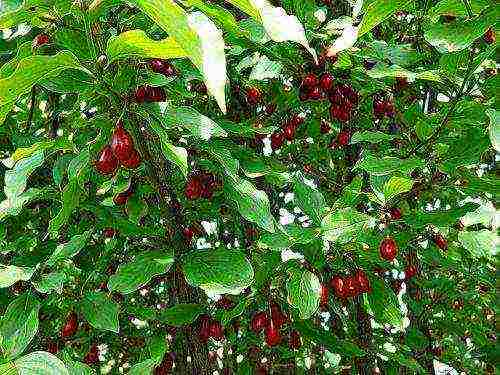
10 little-known facts about dogwood
- The berries ripen for a long time - 2-3 months. Better to plant early varieties.
- The dogwood root system is strong, but shallow. Can be grown in containers.
- Dogwood seedlings are not picky about the quality of the soil - they grow in poor, rocky areas with a shallow layer of soil.
- In nature, dogwood grows on mountain slopes and in gorges. That is why marshy and acidic soils are taboo for dogwood. In such conditions, it develops poorly and practically does not bear fruit.
- The dogwood tree is long-lived - it grows and constantly bears fruit for up to 300 years.
- Flower buds and blossoming dogwood flowers are not at all afraid of early spring frosts. Dogwood blooms very early.
- The plant can withstand frosts down to -30 without additional cover.
- This culture needs cross-pollination - another dogwood should be planted nearby, preferably a different variety.
- Easily tolerates drought, sudden temperature changes, dry winds. But he does not like even short-term flooding and the location of groundwater close to the roots.
- Dogwood needs 25 square meters of food space. The distance to neighboring trees must be at least 5 meters.
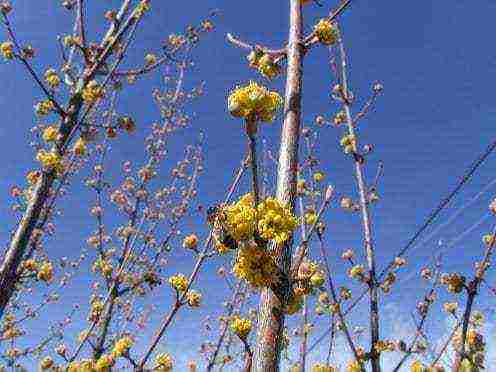
Dogwood begins to bear fruit very early
For the first three years, the dogwood seedling must be kept in "Spartan" conditions, that is, care should be minimal. In the juvenile period (first 3 years of life), the plant is tuned to specific growth settings, which will be perceived as normal and optimal.
If in the early years the seedling received high-quality care, and then for some reason the amount of nutrients decreased sharply, the dogwood gets severe stress, stops bearing fruit and may die altogether.
Cornel will bear fruit well if from the 4th year of life the growing conditions of the seedling change for the better: there will be more fertilizers, moisture and heat, the illumination will improve, there will be better pruning and treatment for diseases. Therefore, the dogwood seedling Should NOT be planted in highly fertile soil and abundantly fill the planting hole with fertilizers.
How to choose a seedling
The ideal dogwood seedling is a one-year-old. The younger the plant, the better it adapts to the characteristics of the site: soil composition, illumination, neighboring plants, climate. Choose dogwood seedlings from local horticultural nurseries... They are already adapted to local growing conditions.
Seedlings with a closed root system (in containers). For normal life, the dogwood tree needs a special microflora on the root system. It is formed in the first year of life in a nursery. If the earthen lump with beneficial bacteria is separated, then the dogwood will freeze in one place for several years.
Planting dogwood
As mentioned above, a dogwood sapling does NOT need to create good growth conditions at first. Therefore, planting dogwood is extremely simple: neither organic nor mineral fertilizers are added to the planting pit.
- The nearest tree and fence must be at least 4 meters away. Dogwood lives for a very long time and grows strongly. And in the shade and dense plantings it bears poorly.
- Dig a hole 80x80x80 in size. Throw the top layer of soil to one side, the bottom - separately.
- Put 10 cm of crushed stone or expanded clay on the bottom.
- Fill the hole with fertile soil from the top layer of soil.
- Keeping the earthen lump as much as possible, place a dogwood seedling and sprinkle it with earth.
- Then water abundantly.
- The root collar should be at ground level. Deepening the seedling is not permissible.
- Cut all branches by 1/3. If the seedling does not have side branches, cut it at a height of 50-60 cm from the ground - form the height of the trunk.
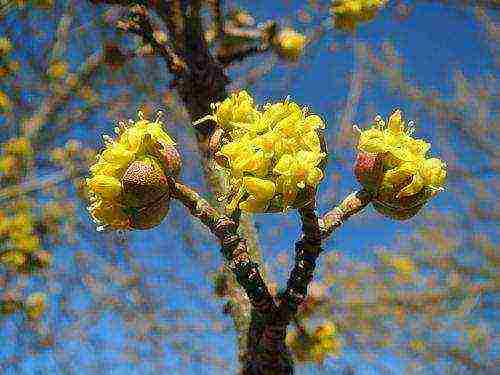
When to plant
It all depends on the climate. In the southern regions, it is better to plant dogwood in the fall until mid-September. The seedling will have another 2 months before the onset of stable cold weather in order to restore the root system and "grab" the soil. In northern regions where winter comes early, planting dogwood is recommended.in the spring before bud break. Cornelian orchard is planted according to the scheme 5x5 meters. 400 seedlings are needed per hectare of area.
Dogwood care
In the first 2 years, caring for the dogwood is simple: the seedlings are regularly watered and mulched with hay or sawdust. Desirable keep it dry earthen coma. The bulk of the roots is at a depth of 40 cm. In a hot summer, the roots quickly dry out and overheat. Therefore, mulch is indispensable.
Important: dogwood should not be mulched with manure or humus. It's better to just sprinkle light sand on the trunk circle. Regular watering increases the size of the berries.
If dogwood care was organized correctly, then in the first growing year a healthy, well-groomed dogwood seedling will give 30-40 cm of growth... In subsequent years, with the development of a powerful root system, the aerial part also develops. The increments are 90-130 cm.
Unlike natural conditions, a grafted dogwood does not grow as a bush. It is easy to form a compact tree at a summer cottage. After planting dogwood cut at a height of 50-60 cm... This will be the height of the trunk in the future. Until the age of seven, dogwood produces wild root shoots that must be removed. If you leave it, then the vaccine dies off after a while.
Top dressing
Spring feeding dogwood consists in the introduction of complex fertilizer before flowering and watering with organic infusion during the setting and pouring of berries.After harvest you also need to water with a solution of complex mineral fertilizer for fruit crops (2-3 buckets under a tree).
After harvesting, the dogwood subrust is accompanied by abundant watering and mulching of the trunk circle.Feed the dogwood in the fall follows organics and phosphorus. Nitrogen is not added. In the fall, humus (2 kg per square meter) and superphosphate are buried in the trunk circle at the rate of 30 grams per m2.
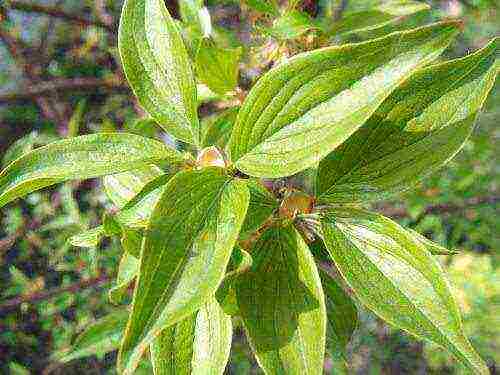
How to prune dogwood
No special trimming is required. Recall that the dogwood blooms very early, one of the first in the garden. Therefore, spring sanitary pruning of dogwood is carried out at the end of winterbefore his kidneys wake up. The branches thickening and growing inward are removed. Also cut dry, intertwined, diseased and broken branches.
It is important to shape the tree in such a way that the middle of the crown is well lit by the sun. Adequate sun exposure is significant increases productivity... Form a V-shaped or chandelier-shaped palmette on a stem of 50-60 cm.
Dogwood will look very decorative and will be a garden decoration. It is actively used in landscape design. In the future, when caring for dogwood, you need to regularly remove wild growth from the stock... Trees older than 7-8 years practically do not form undergrowth. Rejuvenating pruning of dogwood is carried out at the age of 15-20 years, when annual growth is weakened.
Pests and diseases
Cornel is extremely rarely affected by pests and diseases. In severe frosts (below -300 C), flower buds are damaged. In the summer heat, the leaves can dry out. It is important to constantly water the bush, and shade the young plants whenever possible. You can plant sunflowers, a high variety of chrysanthemums, next to the dogwood sapling. They will protect the fragile dogwood from the scorching sun.
Harvesting
Dogwood berries ripen unevenly over several weeks. Very ripe berries fall off by themselves.You can manually remove slightly unripe fruits, after a few days they will reach their condition. The yield from a 10-year-old dogwood is from 10 to 25 kg, from a 20-year-old dogwood - from 40 to 60 kg, and from a 40-year-old dogwood you can get more than 100 kg of berries.
Dogwood varieties
Currently, several dozen varieties of dogwood of different ripening periods have been bred with pink, yellow and red fruits.
Elena, Elegant - early varieties, red-fruited. The berries begin to ripen in early August.
The Elena variety is vigorous, the fruits are sweet, but they are not stored in the refrigerator for long.
The Elegant variety has the advantage - the berries do not crumble, they hang on the tree for a long time. But they do not wither, but begin to rot. Therefore, you should not delay the harvest.
Starokievsky, Lukyanovsky, Evgenia, Vydubetsky - average ripening period (mid-August).
These varieties are large-fruited, the berries are of a beautiful red color, they do not crumble, they bear fruit stably and generously.
Vladimirsky, Firefly, Semyon - late. The berries ripen at the end of August-September.
Vladimirsky and Semyon are large, drought and frost-resistant. The fruits can be stored in the refrigerator for up to 4 weeks.
The berries of the Firefly variety ripen at the same time, do not crumble. The variety reacts very well to fertilization and correct pruning - the fruits become very large and sweet.
Coral - fruits are pink-orange. The variety is medium late. Especially good for jam.
Amber Is the only variety with yellow berries. Late. Ripe fruits crumble, so the harvest is carried out until the berries are fully ripe. From the Yantarny dogwood variety, very tasty and original color jams and jellies are obtained.
READ ALSO: 3 ways to increase your apricot yield
Helpful article? Share with your friends on social networks!
Dogwood grows like a bush or a sprawling tree with a height of 3 to 5 m. The branches form a crown in the form of a regular pyramid.
The juicy cylindrical berries are varied in color, from yellow to almost black. Inside the berries there are oval-shaped seeds 1-1.5 cm in size, 1-3 seeds ripen in them. One plant can produce up to 50 kg of fruits.
 Many gardeners prefer to grow dogwood, as it is unpretentious to care for.
Many gardeners prefer to grow dogwood, as it is unpretentious to care for.
Dogwood properties
Berries have unique medicinal properties. The amount of ascorbic acid in them is much higher than in black currant. Pleasant and healthy jam, sweet and sour dogwood compote will delight lovers of homemade preparations in winter.
Cornel has a wide range of beneficial properties that have a beneficial effect on the body:
- It is used as an anti-inflammatory, antipyretic, diuretic, sedative, bactericidal, choleretic, tonic.
- Used as an astringent for diarrhea.
- Glucose and fructose help in the prevention of diabetes.
- The berries are used internally and externally for eczema, for the treatment of skin diseases.
- Fruits are good at removing toxins from the body. Overripe fruits cleanse the stomach well.
- The use of berries helps to reduce acidity, eliminates heartburn.
- Dogwood berries are used as a medicine:
- increasing appetite,
- activating metabolism,
- strengthening blood vessels,
- increasing blood pressure
- for the prevention of sclerosis and headaches,
- relieves inflammation of the veins,
- from edema,
- activating fat and general metabolism in the body,
- activating fermentation of the pancreas,
- strengthening the gums,
- increasing hemoglobin,
- alleviating the patient's condition with gout.
Varietal variety
There have been no official studies of this type of fruit bushes, so there are no zoned dogwood varieties. The large-fruited dogwood grown by gardeners is the result of folk selection, there are varieties of various shapes, colors and taste.
In the southern regions, varieties are widespread: Red pear-shaped, Late bottle, White-fruited, Yellow-fruited, Giant (Spanish).
The most famous varieties are:
- "Gentle" has yellow berries with fragrant pulp. A pit can be seen through the peel of a ripe berry. Fruits are on average 4-5 g. The bush annually gives an average bountiful harvest of about 40 kg.
- "Vladimirsky"which has dark red berries with a sweet taste of dense pulp. This variety has a high yield, has large fruits, about 7 g in weight. The harvest ripens at the end of August, overripe berries on the branches last for a long time.
- "Firefly" has the largest fruits, their weight is more than 7.5 g. Berries are red-black, sweet flesh inside is maroon. Fruits ripen in August, bears fruit annually and abundantly, yields up to 60 kg. Vitamins are well preserved in berries, their taste does not change when preserved and frozen.
- "Vydubetsky" considered high yielding. One bush yields up to 60 kg of berries annually. Fruits of an expanded pear-shaped form of dark red color, weighing up to 6.5 g, with sweet-sour, dense pulp. The harvest ripens in the second half of September.
- "Elegant" has a symmetrical bottle shape, berry weight up to 5 g, ripens early, at the very beginning of August. Ripe berries are dark cherry in color, inside they have a dark red, very tasty, sweet and tender pulp. The trees bear fruit for many years, give yields up to 50 kg, when overripe, the berries do not fall off.
Dogwood propagation
Dogwood blooms in early spring: in the central part of Russia from about mid-March to the last days of April. Flowers are not afraid of sudden frosts, light frosts. In cold weather, the flowers close and wait for the arrival of heat. Flowering lasts about 2 weeks, foliage appears at the end of flowering. It is better to plant shoots in pairs of the same variety, since the plant is cross-pollinated.
Many varieties are propagated only vegetatively: in spring or summer they are grafted with good healthy cuttings or green cuttings.
The main breeding methods:
- Reproduction by grafting... It is the most common method among amateur gardeners. This is how cultivars with unique properties appear, and plants with fruits of various forms are obtained. Young 2-3-year-old seedlings are selected for grafting.
- Budding method also often used for breeding dogwood. Almost 90% of the kidneys are engrafted. Budding is carried out in the month of August: a vegetative bud is taken from the scion and grafted onto the stock into a T-shaped incision or applied; any adhesive tape is used for strapping. The bud takes root within a month, then turns green and develops. Also, seedlings are used for budding. To do this, take a biennial plant 1.5 m high with 5-6 formed strong lateral shoots. Such a seedling begins to bear fruit in 2-3 years.
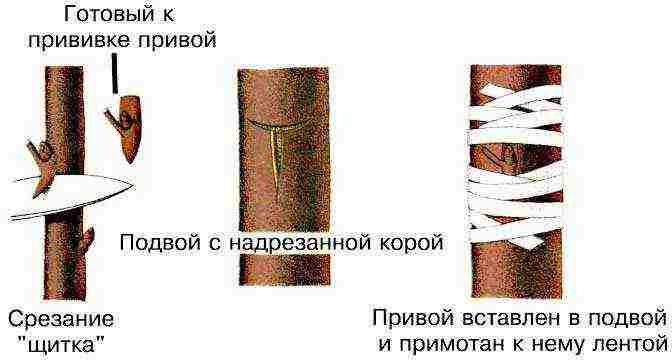 Budding
Budding - Reproduction by layering used by novice gardeners. In this way, the formation of a root from the mother bush to its complete separation is stimulated by the shoot. It nestles, falls asleep 10 cm with moist soil, gradually takes root. The formed rooted shoot is separated after a year and transplanted to another place.
Reproduction by layering is more often used in collective nurseries, where a certain temperature is created with the help of fogging installations and air humidity is easily regulated.
Dogwood planting rules
The shrub grows well in any land, it does not require complementary foods. For accelerated growth and abundant fruiting, liming of the earth around the tree is shown. Dogwood loves open spaces, often it creates a border in the form of a beautiful hedge, the main thing is to take into account that the bushes grow 4-4.5 m wide.
For planting, take 1-2-year-old seedlings about 120 cm tall, with three shoots on the trunk. A pit for planting is dug 80 by 100 cm in size and up to 90 cm deep. A week before planting, organic and mineral fertilizers are placed in the pit: about 1.5 buckets of humus and 50-70 g of ammonium nitrate.
The dried roots are cut by a third before planting.This is also done when transplanting 7-10 year old trees.
Choosing a landing site
- Dogwood bushes are recommended to be planted along the borders of the garden plot, along the fence, also in open, sunny areas or in partial shade.
- Dogwood takes root on any soil, but soil enriched with lime, with a slight acidity, is preferable.
- It will be good for the bushes on a hillock, where groundwater cannot harm the root system, full development is impossible with constant dampness.
- The plant grows well on the open, south or southwest sides of the garden.
- Bushes like space, for each plant it is better to immediately provide a plot of 5 by 5 m.It's good if there are no buildings and other trees nearby, the crown will grow over time and intertwine with the crowns of neighboring plants. Density affects yield.
Care
- Taking care of the plant is simple, the main thing is to regularly loosen the soil, remove weeds, do sanitary pruning on time and water abundantly, especially in the heat.
- Freshly planted bushes require abundant watering, at least 30 liters per bush.
- The roots of the plant require mulched soil, hay, sawdust, freshly cut grass are spread around the bushes, as well as fertilizers - superphosphate, lime.
- The crown of young plants must be formed, dry branches must be cut off.
- Cornel requires mulching; every year at the beginning of summer, the soil is fertilized.
- The plant is very rarely infected with diseases and pests. The leaves of young plants are sometimes affected by powdery mildew, it will disappear without a trace after treatment with a fungicide. To avoid pathogenic fungi, to prevent their spread, you need to regularly cut dry branches.
- The bushes are renewed in 10-15 years.
Pruning bushes
To form a beautiful and correct crown, the bushes should be pruned in early spring, before the sap begins to move. At the same time, excess growth is removed, dry branches and bushes become low, but spreading, which facilitates their care and makes harvesting convenient.
The crown of an adult dogwood tree thickens quickly, this delays the ripening of the fruit, so thinning the crown is simply necessary. This can be done in the fall or early spring.
Experienced gardening tips:
- So that the bushes are well pollinated, the plants are planted next to the same variety.
- Dogwood is considered a plant of the second tier, therefore it develops well in the shade. It can be planted between large trees, which saves space in the garden. Dogwood feels good in the neighborhood with different plants, it only tolerates the presence of a walnut badly.
- When planting young shoots in a pit, it is better not to add any fertilizers.
If the soil is very poor, it is better to sprinkle fertile soft soil into the hole!
- On fertile land, one plant grows beautifully on an area of 6 by 5 m, on poor soil without regular watering in a plot of 4 by 5 m.If there is not enough space, then the middle of the crown thickens strongly and ceases to bear fruit well.
